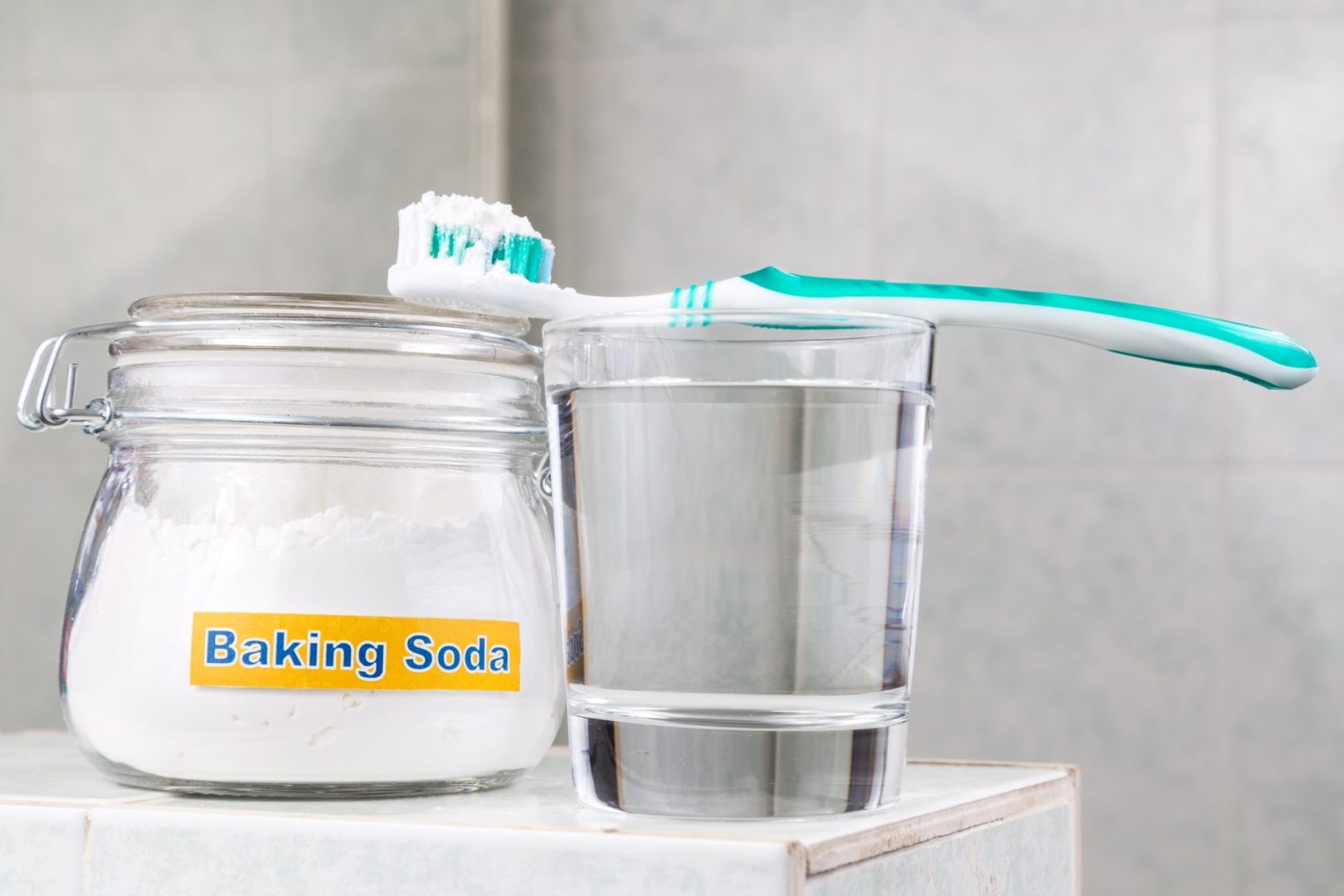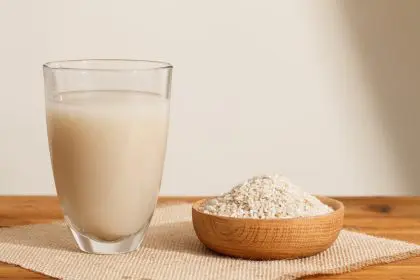The simple white powder sitting in your kitchen cabinet holds the secret to achieving a dazzling smile that rivals expensive professional whitening treatments. This remarkable baking soda technique has been quietly transforming smiles across the country, offering hope to anyone who has ever felt self-conscious about stained or yellowed teeth.
Coffee stains, wine marks, and years of everyday eating can leave teeth looking dull and discolored, affecting confidence and making people hesitant to smile freely. The beauty industry has capitalized on this insecurity, offering expensive whitening strips, gels, and professional treatments that can cost hundreds of dollars. However, the solution to achieving a brilliant white smile might already be in your pantry.
Understanding teeth staining and natural solutions
Teeth naturally accumulate stains over time through daily activities that most people consider normal parts of life. Coffee, tea, red wine, berries, and even certain medications can cause surface stains that build up gradually, creating a yellowish or brownish tint that makes teeth appear aged and unhealthy.
Baking soda, scientifically known as sodium bicarbonate, possesses unique properties that make it an excellent natural teeth whitener. Its mild abrasive nature helps remove surface stains without damaging tooth enamel when used correctly. The alkaline properties of baking soda also help neutralize acids in the mouth that can contribute to tooth decay and discoloration.
The crystalline structure of baking soda creates gentle scrubbing action that lifts stains from tooth surfaces. Unlike harsh commercial abrasives, baking soda dissolves gradually during brushing, becoming less abrasive as it works. This natural reduction in abrasiveness helps protect tooth enamel while still providing effective stain removal.
The proven 7-day whitening protocol
This proven baking soda technique requires consistency and proper application to achieve maximum results. The seven-day protocol is designed to provide noticeable whitening while protecting tooth enamel from damage.
The simple formula requires two tablespoons of pure baking soda, one tablespoon of water, and optionally three drops of peppermint oil for flavor. Mix these ingredients until they form a smooth paste with the consistency of toothpaste. The mixture should be thick enough to stay on your toothbrush but smooth enough to spread easily across your teeth.
Days 1-2 involve applying the baking soda paste once daily, preferably in the evening. Days 3-4 require continuing once-daily application while monitoring tooth sensitivity. Days 5-6 focus on maintaining consistent daily use while observing whitening progress. Day 7 marks the final application with progress assessment.
Proper application for maximum results
The way you apply baking soda paste significantly impacts both its effectiveness and safety. Start with a soft-bristled toothbrush to prevent excessive abrasion. Wet the brush slightly, then apply a small amount of baking soda paste, about the size of a pea.
Brush gently using circular motions, focusing on areas with visible stains. Avoid aggressive scrubbing, which can damage enamel and cause sensitivity. The baking soda will do the work through chemical action rather than mechanical force.
Brush for exactly two minutes, then rinse thoroughly with lukewarm water. Follow immediately with a fluoride toothpaste to help remineralize tooth enamel and provide additional protection against cavities.
Enhanced whitening formulations
Several natural ingredients can be combined with baking soda to enhance its whitening effects. One tablespoon baking soda combined with one teaspoon 3% hydrogen peroxide and a pinch of salt creates a more potent whitening effect, as hydrogen peroxide helps break down stains at the molecular level while baking soda provides gentle abrasion.
Two tablespoons baking soda mixed with one tablespoon coconut oil and five drops of tea tree oil provides antibacterial properties and helps bind the ingredients together, while tea tree oil offers additional antimicrobial benefits.
Two tablespoons baking soda combined with one mashed ripe strawberry and a few drops of lemon juice creates a natural whitening treatment. Strawberries contain malic acid, which helps break down stains naturally, while lemon juice provides additional bleaching properties.
What to expect during transformation
The seven-day whitening journey produces different results at various stages. Days 1-2 may feel slightly gritty, and you might notice increased saliva production. Some people experience mild tingling, which is normal. Teeth may appear slightly brighter, but dramatic changes are not yet visible.
Days 3-4 show more noticeable whitening effects, particularly on surface stains. Coffee and tea stains often show the first signs of improvement. Some people may experience mild sensitivity, which usually indicates the treatment is working.
Days 5-6 reveal significant whitening, with most surface stains showing substantial improvement. Teeth should appear noticeably brighter and healthier. This is typically when friends and family begin commenting on your improved smile.
Day 7 delivers maximum results, with teeth appearing several shades whiter than at the beginning of the treatment. The improvement is usually most dramatic in people with significant surface staining.
Managing sensitivity and safety
Some people experience tooth sensitivity during baking soda treatments, which is generally mild and temporary. If sensitivity occurs, reduce the frequency of applications to every other day instead of daily. You can also dilute the baking soda paste with additional water to make it less concentrated.
Individuals with extensive dental work like veneers or crowns should avoid this treatment. Those with severe tooth sensitivity or gum disease should also exercise caution. People with thin enamel or exposed tooth roots may experience increased sensitivity.
Never use baking soda more than once daily during the whitening period. Avoid prolonged contact with gums to prevent irritation. Don’t combine baking soda with other abrasive substances. Stop use if severe sensitivity or pain develops.
Maximizing and maintaining results
Several lifestyle adjustments can enhance the effectiveness of baking soda whitening. During the whitening week, avoid staining beverages like coffee, tea, and red wine. Use a straw when drinking colored beverages to minimize contact with teeth. Rinse with water after eating foods that may cause stains.
For post-whitening maintenance, continue using baking soda paste once or twice weekly. Maintain excellent oral hygiene with regular brushing and flossing. Consider whitening touch-ups every few months. Stay hydrated to promote natural saliva production.
Incredible cost savings
The financial benefits of baking soda whitening are substantial compared to professional alternatives. In-office laser whitening ranges from $500-$1,500 per session. Professional take-home kits cost $300-$600. Whitening strips typically cost $30-$60 per box.
Baking soda (one box) costs $2-$4. Additional ingredients add $5-$10. Total cost for multiple treatments stays under $15. This dramatic cost difference makes baking soda whitening accessible to virtually everyone, regardless of budget constraints.
Additional oral health benefits
Beyond whitening, regular baking soda use provides several oral health benefits. Baking soda helps break down plaque buildup, reducing the risk of cavities and gum disease. The alkaline environment created by baking soda inhibits bacterial growth that contributes to plaque formation.
The antibacterial properties of baking soda help eliminate odor-causing bacteria in the mouth, providing natural breath freshening effects that last longer than traditional mouthwashes. Regular baking soda use can help reduce gum inflammation and bleeding by neutralizing acids and reducing bacterial populations in the mouth.
Natural complementary treatments
While baking soda provides excellent whitening results, several other natural ingredients can complement the treatment. Oil pulling with coconut oil can be performed daily during the whitening week to enhance results. Swish one tablespoon of coconut oil in your mouth for 10-15 minutes, then spit it out and brush normally.
Activated charcoal treatments can be used once or twice during the week as an additional stain-removing agent. Mix activated charcoal powder with water to create a paste, apply to teeth for two minutes, then rinse thoroughly.
Building sustainable habits
The most successful approach to maintaining white teeth involves developing sustainable habits that support long-term oral health and appearance. Use baking soda paste 1-2 times per week. Oil pull with coconut oil 2-3 times per week. Maintain excellent daily oral hygiene. Limit staining foods and beverages when possible.
Evaluate whitening progress and overall oral health monthly. Adjust treatment frequency based on results. Consider professional cleaning if needed. Take progress photos to track improvements.
Troubleshooting common issues
Some people encounter challenges during their baking soda whitening journey. If the mixture creates too much foam, reduce the amount of baking soda or add slightly more water to achieve a smoother consistency. Adding a few drops of natural peppermint oil or mixing with a small amount of natural toothpaste can improve the taste without compromising effectiveness.
Ensure you’re applying the paste evenly to all teeth and maintaining consistent daily use. Some teeth may whiten faster than others due to differences in enamel thickness and stain severity.
This comprehensive approach to baking soda whitening offers a natural, affordable, and effective solution for achieving a brighter smile. The seven-day protocol provides dramatic results while establishing healthy habits that support long-term oral health. By understanding proper application techniques, managing potential side effects, and maintaining consistent use, anyone can achieve professional-quality whitening results at home using this simple kitchen ingredient.
The transformation possible with baking soda whitening extends beyond just appearance – it can boost confidence, improve oral health, and provide a sense of accomplishment from taking control of your dental care naturally. This empowering approach to teeth whitening demonstrates that effective self-care doesn’t require expensive treatments or harsh chemicals, just knowledge, consistency, and the willingness to try proven natural alternatives.













